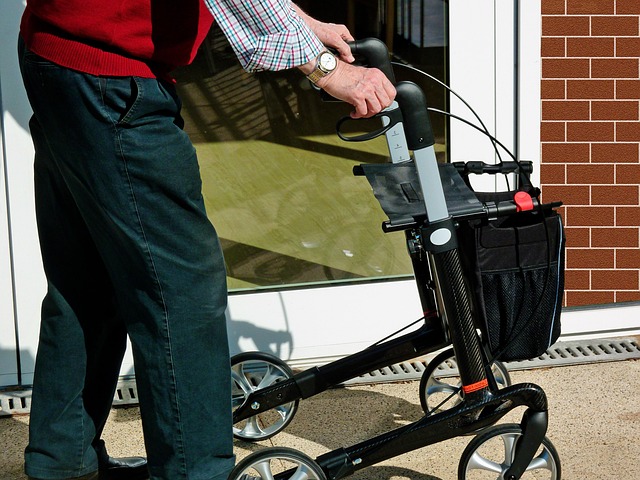A Comprehensive Guide to Subsidised Housing for Seniors
Navigating housing options as a senior can feel overwhelming, especially when dealing with fixed incomes and rising living costs. Subsidised housing programs offer valuable financial relief and support for older adults seeking affordable, safe, and comfortable living arrangements. Understanding the various programs available, eligibility requirements, and application processes can help seniors make informed decisions about their housing future while maintaining independence and quality of life.

Finding affordable housing becomes increasingly important as people age, particularly when living on fixed incomes. Government-subsidised housing programs provide essential support for seniors who need safe, affordable places to live while maintaining their independence and dignity.
Understanding Subsidised Housing Options for Seniors
Subsidised housing for seniors encompasses various federal, state, and local programs designed to reduce housing costs for older adults. The most common programs include Section 8 Housing Choice Vouchers, public housing developments specifically for seniors, and Section 202 Supportive Housing for the Elderly. These programs typically serve individuals aged 62 and older who meet specific income requirements, usually earning no more than 50-80% of their area’s median income.
Each program operates differently but shares the common goal of providing affordable housing solutions. Section 8 vouchers allow seniors to choose their own housing in the private market, while public housing provides government-owned units. Section 202 housing combines affordable rent with supportive services tailored to senior needs.
Cost and Rent Prices in Subsidised Programs
Rent calculations in subsidised housing programs follow federal guidelines that typically limit housing costs to 30% of a tenant’s adjusted gross income. For seniors receiving Social Security benefits averaging $1,500 monthly, this means paying approximately $450 per month for housing costs including utilities.
Actual costs vary significantly by location and program type. In high-cost areas like California or New York, even subsidised rents may reach $800-1,200 monthly, while rural areas might see costs as low as $200-400. Section 8 vouchers provide more flexibility, as tenants can choose units up to the program’s payment standard, which varies by metropolitan area.
| Program Type | Average Monthly Cost | Income Requirement | Waiting Period |
|---|---|---|---|
| Section 8 Voucher | $300-800 | 50% AMI | 2-8 years |
| Public Housing | $250-600 | 80% AMI | 1-5 years |
| Section 202 Housing | $400-900 | 50% AMI | 1-3 years |
| USDA Rural Housing | $200-500 | Various | 6 months-2 years |
Prices, rates, or cost estimates mentioned in this article are based on the latest available information but may change over time. Independent research is advised before making financial decisions.
Facilities and Utilities Included in Senior Housing
Most subsidised senior housing programs include basic utilities such as water, sewer, and trash collection in the rent calculation. Many developments also provide heat and electricity, though this varies by property and region. Senior-specific housing often includes additional amenities designed for older adults’ needs and preferences.
Common facilities in subsidised senior housing include community rooms for social activities, laundry facilities, and accessible design features like grab bars, ramps, and wider doorways. Some properties offer meal programs, transportation services, and on-site health and wellness programs. Section 202 housing particularly emphasizes supportive services, often including case management, housekeeping assistance, and coordination with local health services.
Security features are standard in most senior housing developments, including controlled access entry systems, emergency call systems in units, and on-site management during business hours. Many properties also maintain outdoor spaces like gardens or walking paths to encourage physical activity and social interaction among residents.
How to Apply and Navigate the Process
The application process for subsidised housing requires patience and organization, as waiting lists are common due to high demand. Seniors should start by contacting their local Public Housing Authority (PHA) to learn about available programs and obtain applications. Most PHAs maintain separate waiting lists for different programs, so applicants may need to submit multiple applications.
Required documentation typically includes proof of age, Social Security cards, income verification, bank statements, and medical records if applying for disability preferences. Many programs offer preference points for veterans, individuals with disabilities, or those currently homeless, which can reduce waiting times.
Applicants should maintain current contact information with housing authorities and respond promptly to requests for updated documentation. While waiting, seniors can explore other options like privately-owned subsidised housing or state and local programs that might have shorter waiting periods.
Once housing becomes available, applicants usually have limited time to accept offers and complete lease requirements. This process includes background checks, lease signing, and unit inspections. Understanding these steps in advance helps ensure smooth transitions into subsidised housing.
Subsidised housing programs provide crucial support for seniors seeking affordable, safe living arrangements. By understanding available options, cost structures, included amenities, and application processes, older adults can make informed decisions about their housing needs. While waiting periods can be lengthy, the financial relief and supportive community environments these programs offer make them valuable resources for seniors managing fixed incomes and changing housing needs.




